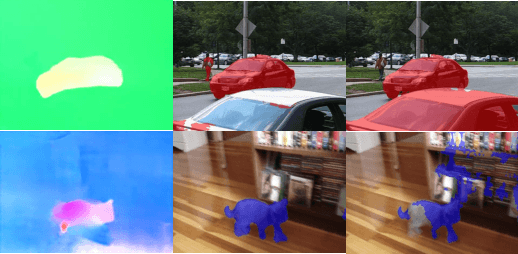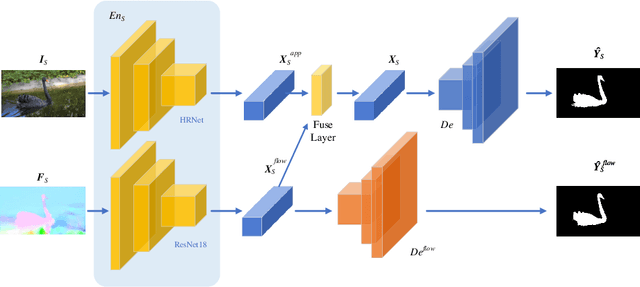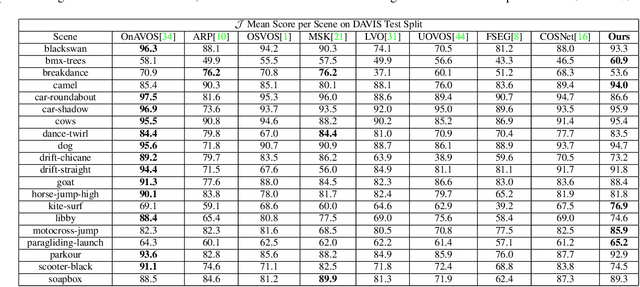DAVOS: Semi-Supervised Video Object Segmentation via Adversarial Domain Adaptation
Paper and Code
May 24, 2021



Domain shift has always been one of the primary issues in video object segmentation (VOS), for which models suffer from degeneration when tested on unfamiliar datasets. Recently, many online methods have emerged to narrow the performance gap between training data (source domain) and test data (target domain) by fine-tuning on annotations of test data which are usually in shortage. In this paper, we propose a novel method to tackle domain shift by first introducing adversarial domain adaptation to the VOS task, with supervised training on the source domain and unsupervised training on the target domain. By fusing appearance and motion features with a convolution layer, and by adding supervision onto the motion branch, our model achieves state-of-the-art performance on DAVIS2016 with 82.6% mean IoU score after supervised training. Meanwhile, our adversarial domain adaptation strategy significantly raises the performance of the trained model when applied on FBMS59 and Youtube-Object, without exploiting extra annotations.
 Add to Chrome
Add to Chrome Add to Firefox
Add to Firefox Add to Edge
Add to Edge